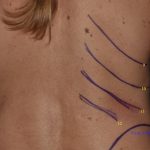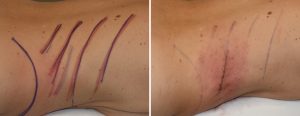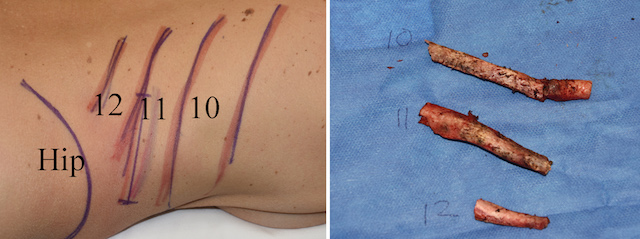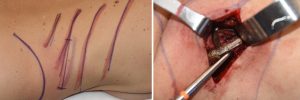Background: One rare source of lower back pain is known as costo-iliac impingement syndrome. As the name indicates this is where the lower ribs run into and rub against the the top of the hips. (iliac crest) This anatomic derangement is also known by other names such as iliocostal friction and rib tip syndrome.
Given the severe, and often under appreciated, downward angulation of the free floating ribs (#s 11 and 12) it is not hard to imagine how this can happen. The most commonly described mechanism is in patients who have developed osteoporosis of the spine and subsequent loss of height. This shortens the natural distance between the ends of ribs #11 and 12 and the iliac crest. Another classic patient for this syndrome is in scoliosis. With a natural tilt of the spine to one side, the lower ribcage is shifted closing the rib-hip gap.
But despite these very explainable anatomic causes of the costo-iliac syndrome, I have seen patients that do to have such obvious reasons for their symptoms. These are usually very active patients that exercise regularly but develop this type of lower back pain when they do. Interestingly it is always just one side and never bilateral or on both sides.


When seen two days after surgery, while she had expected surgical discomfort and swelling, she no longer felt 
Case Highlights:
1) The definitive surgical treatment for costo-iliac syndrome is removal of the offending rib(s).
2) The outer half of ribs #11 and #12 should be removed to eliminate all risks of bony impingement.
3) Such rib removal can be done through a small oblique lower back incision.
Dr. Barry Eppley
Indianapolis, Indiana




